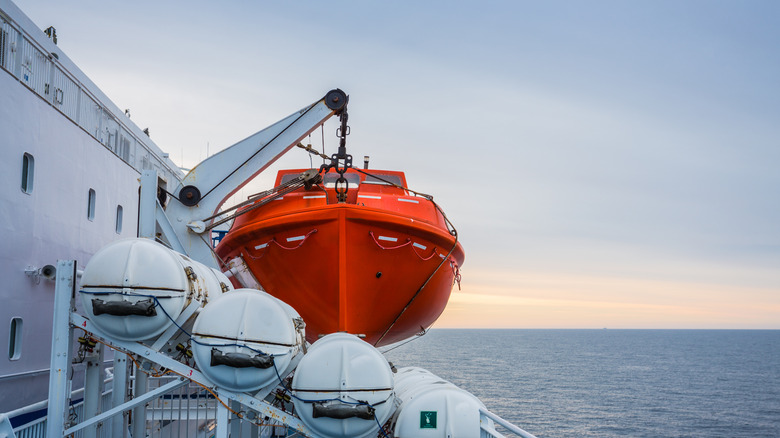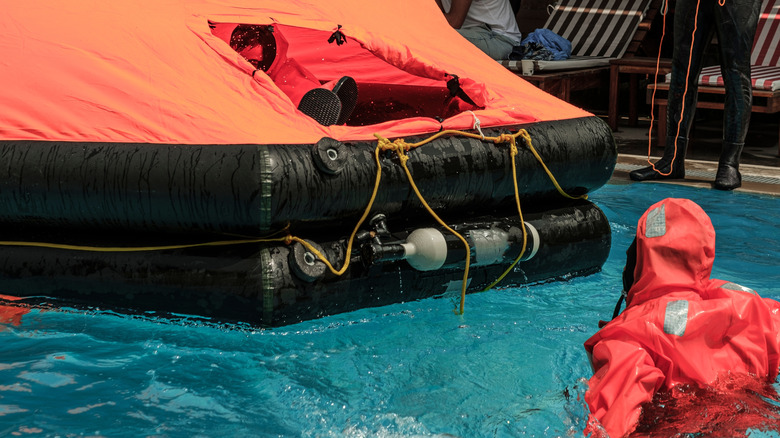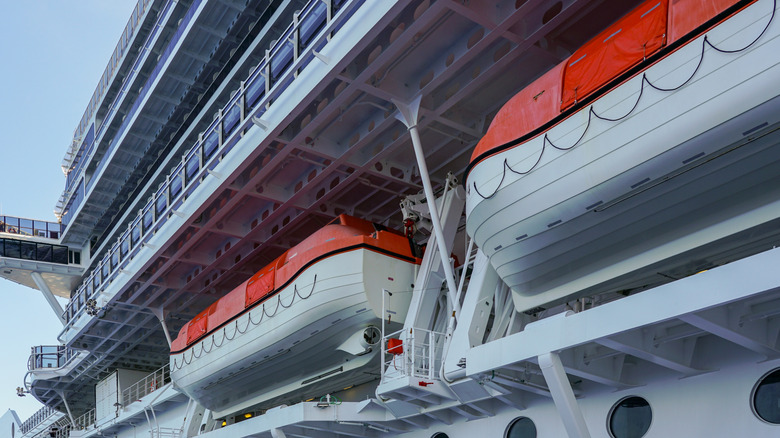Yes, Your Cruise Ship Probably Has Enough Lifeboats
Not having enough lifeboats for everyone on the Titanic (though it was officially known as RMS Titanic) was one of the primary reasons around 1,500 people lost their lives during the ship's maiden journey. Back then, the ship carried just 20 lifeboats, enough to save only about half of the people on board. As a result, people who couldn't find a spot on a lifeboat ended up in the freezing Atlantic waters after the ship sank.
The tragic incident took place more than 100 years ago in 1912. You may think safety regulations would now require ships to carry enough lifeboats for everyone on board, especially after learning from past mistakes. However, ships today still don't carry lifeboats to accommodate everyone, and it is not due to some legal loophole, but rather by design. Maritime travel has become way safer than it was a 100 years ago, and modern ships use a variety of life-saving tech and distress codes like Code Alpha and Code Bravo to ensure passenger safety. That said, you might be wondering how fewer lifeboats translates to more safety.
Cruise ships use a combination of lifeboats and life rafts
The International Convention for Safety of Life at Sea (SOLAS) is a global treaty that governs the safety of all merchant ships. Just two years after the Titanic sank, SOLAS mandated all ships to carry enough lifesaving equipment like lifeboats and life rafts for everyone on board. The regulations have become even more stringent now, with SOLAS mandating ships to carry enough lifeboats and life rafts for 125% of the ship's total capacity.
There are a variety of reasons why ships don't just rely on lifeboats but also use life rafts. SOLAS caps the maximum carrying capacity of a lifeboat at 150 passengers, and most lifeboats are designed to accommodate this maximum number. Because of this, it is hard for ships to physically accommodate such large lifeboats. Even the biggest cruise ships only carry around 20 lifeboats and use life rafts for passengers and crew who can't get on a lifeboat.
Additionally, lifeboats are lowered into the water using a lowering mechanism while a ship is moving and often needs manual handling. The crew needs to be present to settle passengers on the lifeboats and lower them to the water surface.
The remaining crew therefore needs an alternative way to get down to the water after saving everyone. The crew uses life rafts that self inflates on the water surface with a water-slide-like opening on the ship's deck.
Modern lifeboats are far better equipped
If you have watched James Cameron's "Titanic," you would remember the lifeboats as small wooden boats with a small seating capacity. Lifeboats today have gotten way bigger and much more advanced, such that they are self-sufficient in a number of ways.
Lifeboats need to have a compression ignition engine on board to propel the lifeboat at a minimum speed of six knots when fully loaded. Modern lifeboats are mandated by SOLAS to carry around 2,400 calories worth of food, stored in airtight and watertight containers for each passenger on the lifeboat. Additionally, SOLAS mandates lifeboats to carry first aid, six doses of anti-seasickness medication, and one seasickness bag for passengers in need.
Apart from this, lifeboats carry an array of signalling equipment including at least six hand flares, four rocket parachute flares, and two buoyant smoke signals to ask for help from ships and planes flying in the area.


